I was born and bred here in Malaga and after I turned 21years old, I lived in many different countries all around the world. Inevitably, I eventually missed home, and I returned back to Malaga where I gained a job and began to settle back into the Andalusian way of life. Unfortunately, the company I was working for closed and this is what spurred me on to starting my own company. I already had my licence as a tour guide, and I thought why not! The good thing is it didn’t require a lot of investment, so I started my tour guiding company 8 years ago and it slowly grew to where it is today. Now, my business “We Love Malaga” delivers tours in and around the Malaga province. Since the recent COVID-19 pandemic however I’ve had a lot of thinking to do, as I can no longer take people around the streets on an actual tour. This is where the concept of my ‘highlights of Malaga, a 360 virtual tour’ was born. I now offer virtual tours using 21st-century technology so customers can be taken on a historic journey around Malaga. I have been a member of the TLR family for 3 years now and I was lucky enough to be able to take them on my very first 360º virtual tour!
The Tour
Alameda Principal
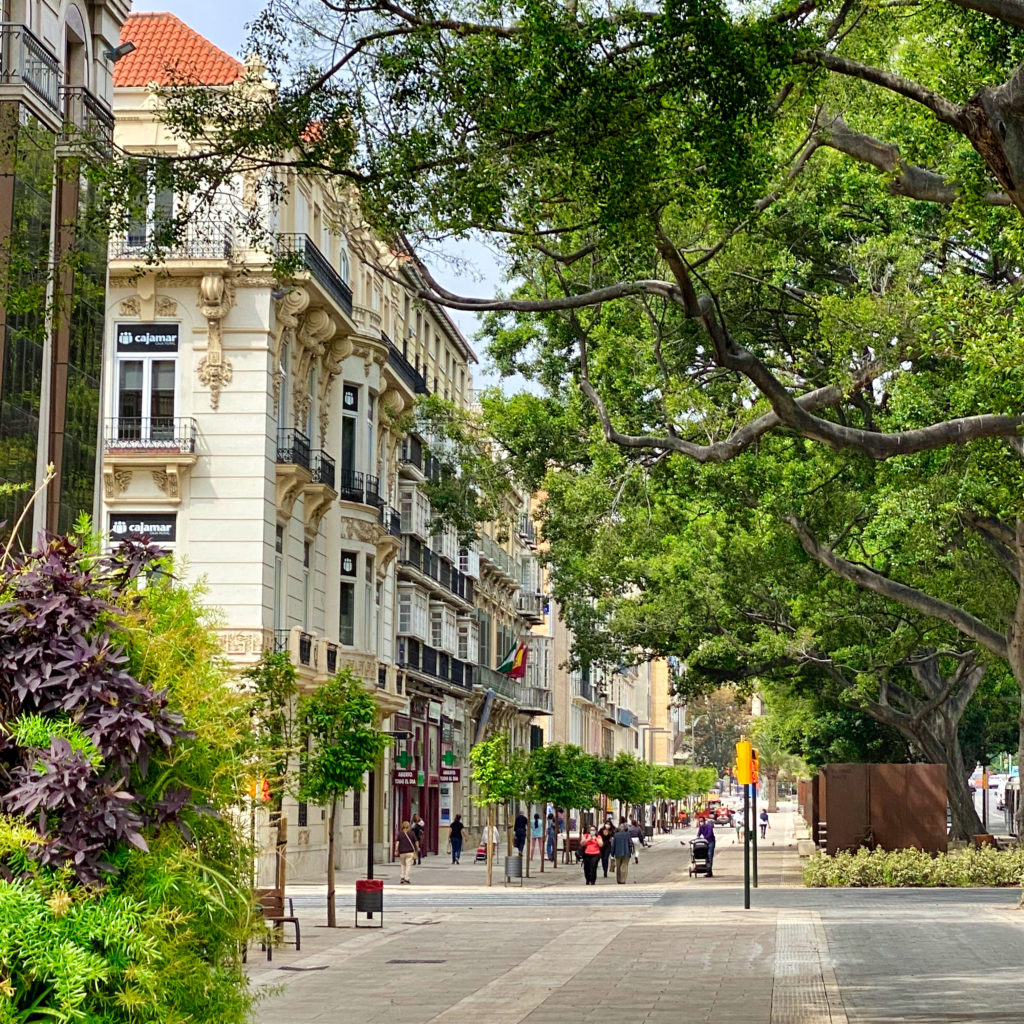
We started the tour in Soho Alameda, where I then walked to Alameda Principal, and it’s hard to believe that the majority of this area was once covered by water as there were 2 forts here before. The Alameda Principal is the main street in Malaga and runs from the Plaza de la Marina to the Tetuan Bridge. In 1786, King Carlos III gave permission to remove the old city walls that surrounded the city. Space became available and after that, and hence the street was constructed and became the favourite place for the rich to build their palaces. In 1895 the street was remodelled and in 1925 it was opened to traffic, giving its current appearance. The street is lined with huge Ficus trees, many of which are more than a hundred years old! The trees are decorated with many small lights during Christmas and it’s well worth a visit for those who like winter getaways! The street is also where most of the city buses stop and is used for the Holy Week processions. There are also a few flower stands, and these constitute the flower market of the city.
Antigua casa de Guardia
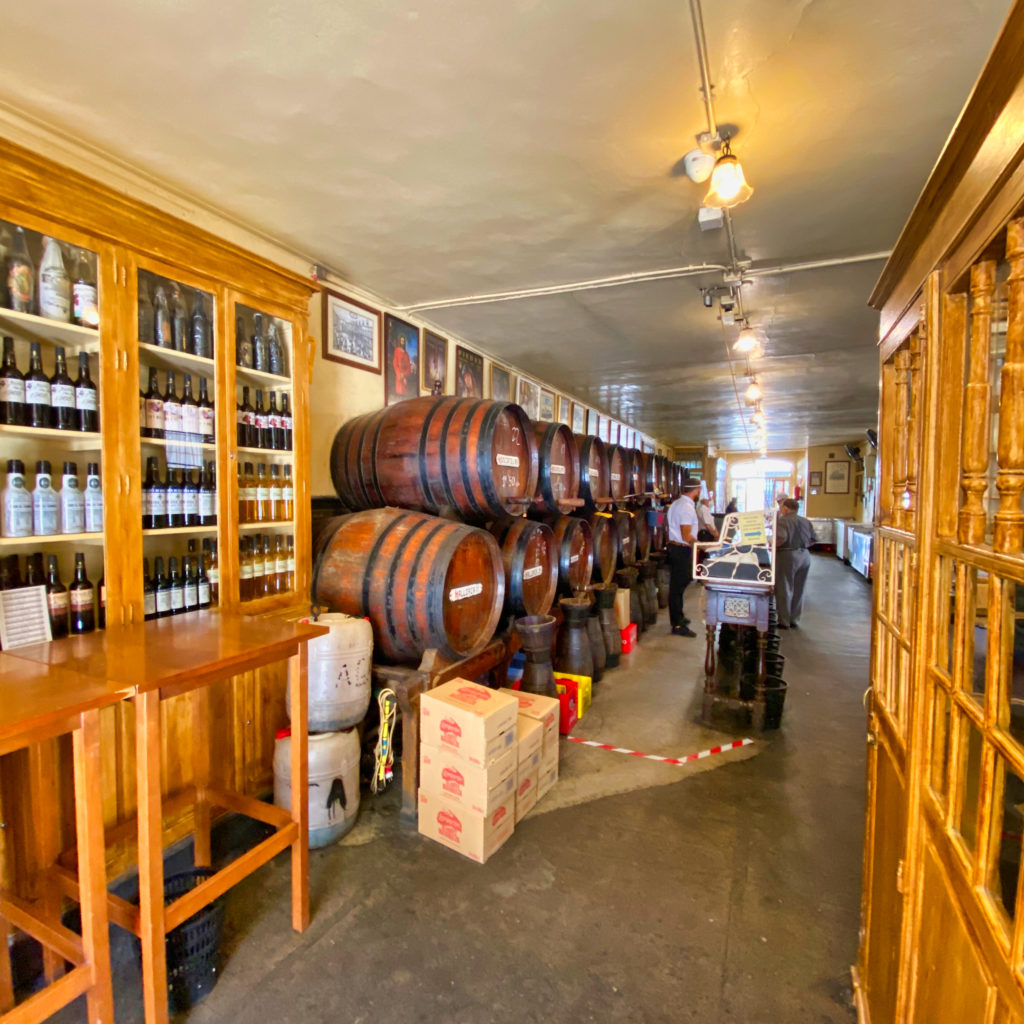
Next, we walk past the oldest bar in Malaga, “Antigua casa de Guardia” where they serve all the famous sweet wines, made from raisins. I always take my tour groups through this bar as it is an extraordinarily small bar with its old barrels and dense yeasty fruity aromas, the customers love it! I wouldn’t hesitate to say that it’s Málaga’s most iconic bar! Founded in 1840 by a leading winemaker and vintner, Don Jose de Guardia, who even received a royal warrant from Queen Isabel II to provide wines. Mr Guardia relinquished control of the bar in 1865, but all subsequent owners have respected the original name and indeed have maintained its original character and function in the current premises which were occupied in 1900.
Mercado Central de Atarazanas
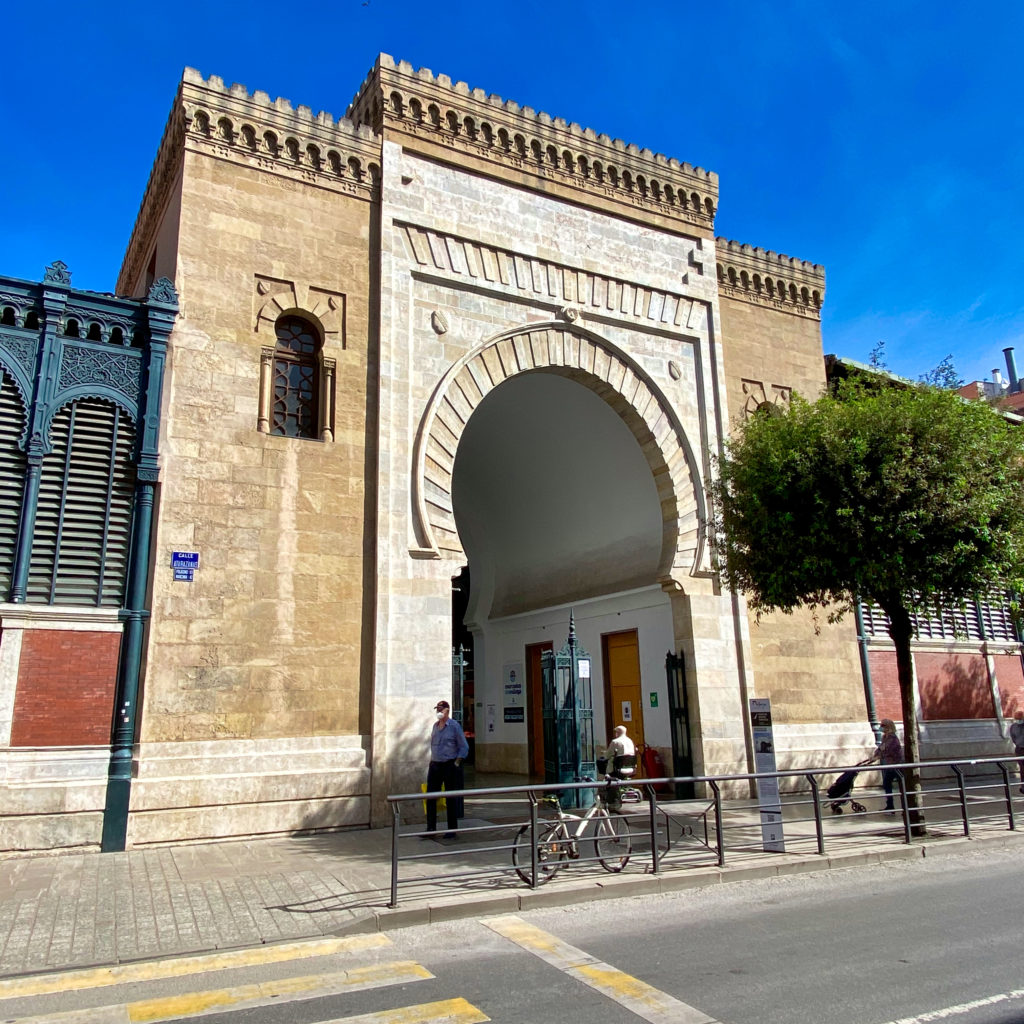
After, we stumble across Atarazanas Market. The building is from 1879 and inside it is divided into 3 sections (fish, meat and vegetables), it’s one of the oldest markets we have in Spain. The seafood is one of the busiest parts of the market where many people come for lunch or just to walk around whilst sampling the local produce. The main entrance, a huge horseshoe archway in off-white marble, is in fact the only remaining part of what was once a grand seven-arched “shipyard” – which is Arabic for ataranzas. Amazingly, even as late as the 18th century the sea reached right up to the present-day market, and fishermen sat alongside the south-facing wall of the building and cast their lines into the Malageñan sea. By the 19th century, the original structure had largely fallen into disrepair and in 1868 the revolutionary government of the time ordered the remaining ruins to be pulled down to make way for a modern and spacious market. Thanks to the efforts of the architect Joaquin Rucoba, the horseshoe arch was saved. Rucoba rebuilt this, placing it at the centre of the Southern façade, and then completed the building in Arabic style, with slatted, arched windows and panels, but using the most modern of 19th-century building materials: iron.
Statue of Larios
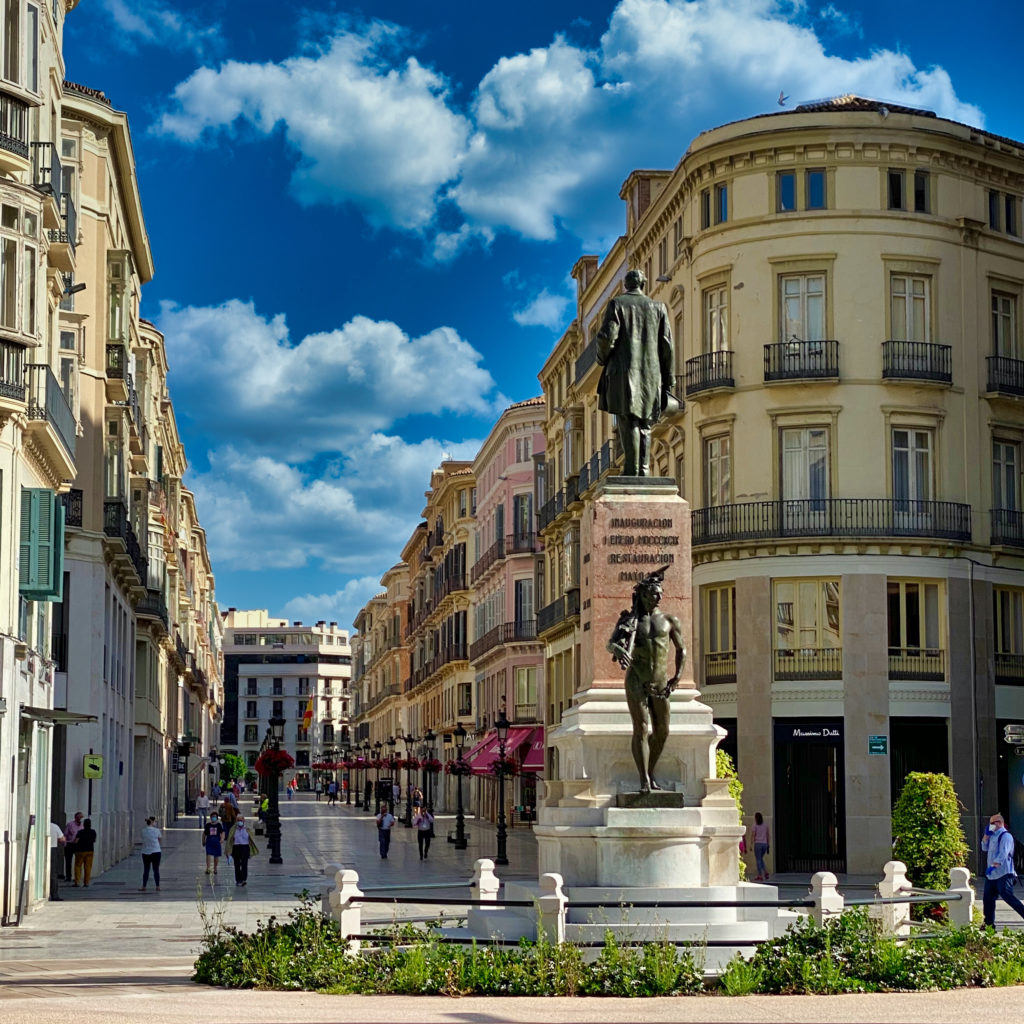
The Larios family was one of the wealthiest families we had in Spain, they came from Rioja and now the statue of Larios Marques is located here along with their palace too. The statue is one of the bigger and more prominently placed statues in the city and is located on the seafront but also effectively at the foot of the street named after him. During the Spanish civil war, when Spain reclaimed the republic, many workers were not happy with the working conditions, so on May 1st, 1931, they threw the statue into the water and replaced it with a statue of a worker on top. It took 3 years to find the statue under the water and now it’s been replaced on its plinth again, although interestingly facing in an alternate direction. On Larios street itself, the corners of the buildings are all rounded to let the breeze through the street. It is the 5th most expensive street we have here in Spain! We used to have hardwood floors running through Larios and even animals were not allowed to go down the street, however, now the floors have been replaced with concrete.
El Pimpi Bodega Bar
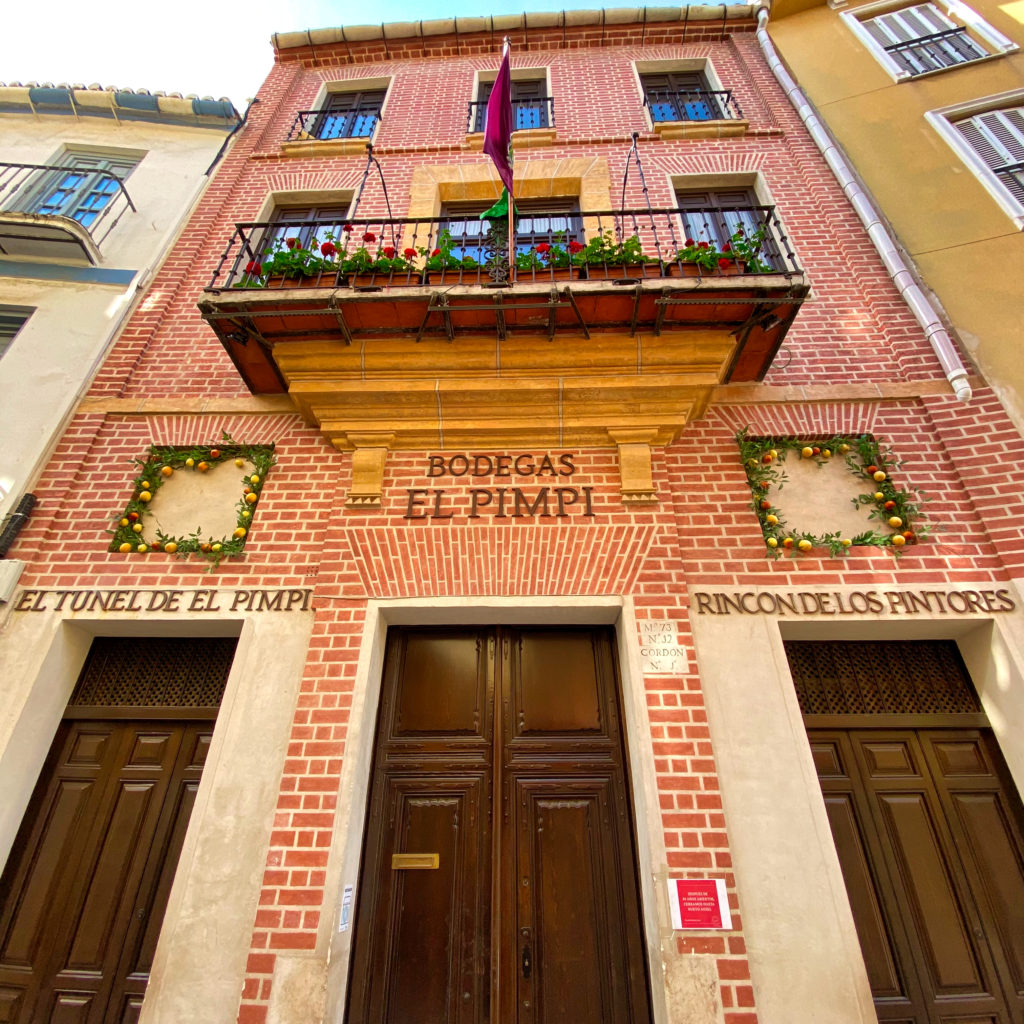
Founded in 1971 and located in an 18th century mansion, this bar is a firm favourite in Malaga. The old storerooms are now a collection of fascinating interconnected spaces, decorated with trailing plants, photos of celebrities and bullfighters. You can even see Picasso and family, Antonio Banderas (Malaga’s second most famous son) and various artists, stars and sports personalities. Similar to Antigua casa de Guardia, El Pimpi is one of the longest-standing bodega bars in Málaga, where you can enjoy local food & wines and, above all, the culture & traditions of southern Spain. There are different theories for the origins of this bar’s name. One interesting theory is that it was named after popular city figures named “Los Pimpis”, or one figure in particular named “Pimpi”. These were people who helped ship crews or passengers that arrived in Malaga from sea, and therefore they became the city’s first guides. Of course, as the name implies, los pimpis would help the people arriving from sea to locate certain “questionable” assets in Malaga. I’m sure you can figure out what they were for yourselves!
Roman Theatre

Our final stop, the Roman Theatre! My advice would be to go and see this when it’s dark at night, as this is when this place looks particularly enchanting. It’s almost 2000 years old and it was only discovered in 1951! It lay half-hidden for many years by the Casa de la Cultura (Culture House) building, built between 1940 to 1942 and renovated in the 1960s. It was during these works when the first signs of the Theatre were discovered and the Casa de Cultura was demolished to uncover and properly assess this theatre, which came to be a part of the cultural programmes of 1992. It is now one of the remaining symbols of Roman Hispania in Malaga and now has an interpretation centre where new technologies present the life and customs of the time.
Of course, the actual 360° virtual tour of Malaga which I gave to the TLR family has been adapted to allow me to write this blog post. The real virtual tour was via all the modern technologies so they could follow me live as I walked around Malaga city. This allows me to interact live with my audience and enables me to answer any questions and generally have a laugh with everyone whilst proving all my expert knowledge on the history of the city.
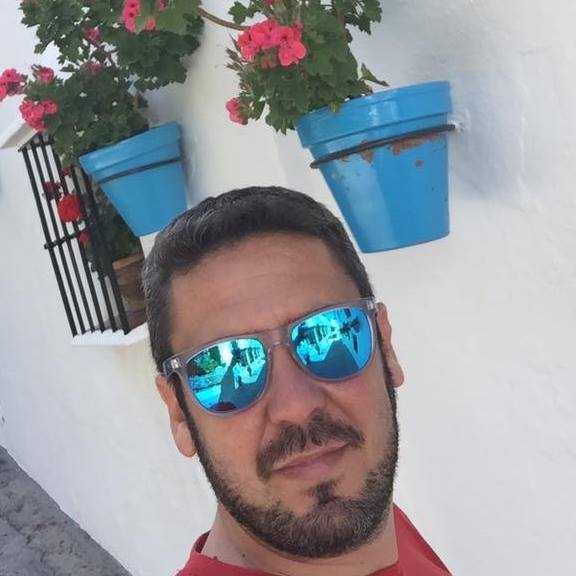
Victor is the brain of welovemalaga, the one who created and developed the company, from the name to the website. Victor was born right after the “excitement” of Spain’s young democracy in 1978 when Spain approved their new constitution. Victor’s passion is travelling around the world, American and Spanish history, cooking all kinds of food, and his two cats. Now, his new business venture, providing 360 ° virtual tours of Malaga will be keeping him busy for the foreseeable future! To find out more, you can get in touch with him via his website.


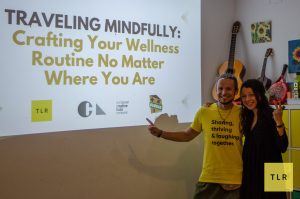


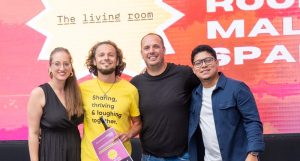
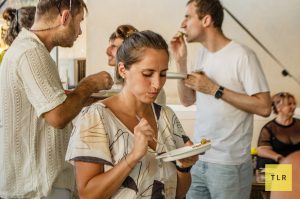
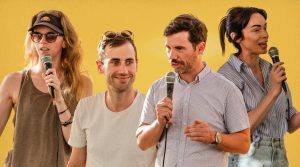

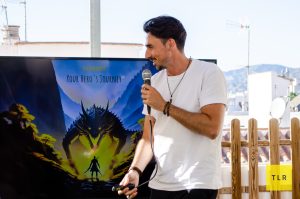
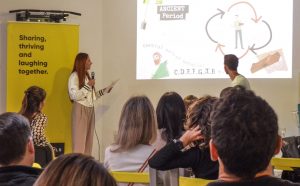


3 Responses
Enjoyed your tour. Thank You.
Glad you have a new business venture. Good Luck
Good seeing your handsome face! Your walking tours leave me both happy and sad. Happy to remember when I was there with my retirement group. You made our trip memorable. Sad, because so many of my group are now gone because of the Covid. Also missing you and your beautiful city.
Wonderful and so glad you are doing the virtual tours! We enjoyed our trip to Spain and Portugal so much, and you are one of our all-time favorite tour guides, so I know your clients love your tours. Good for you for finding a way to make it all work during the pandemic and so glad you are well. I’ve been worrying!